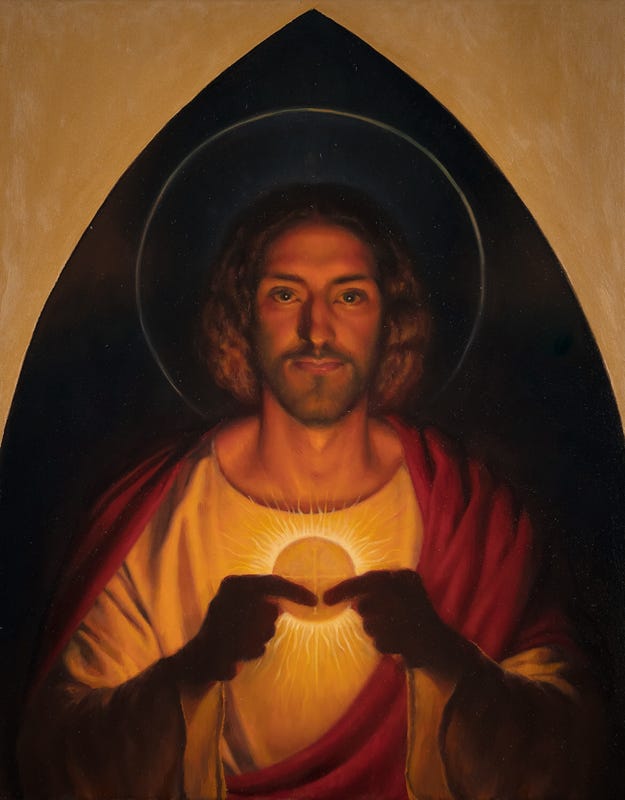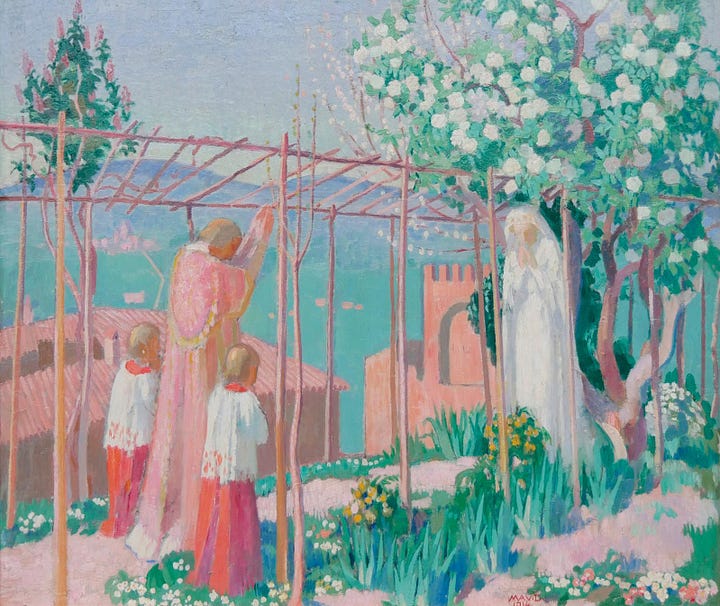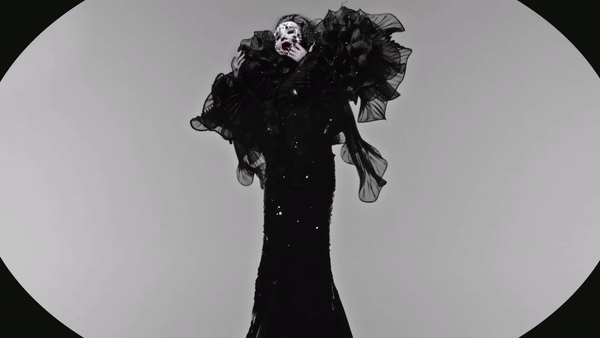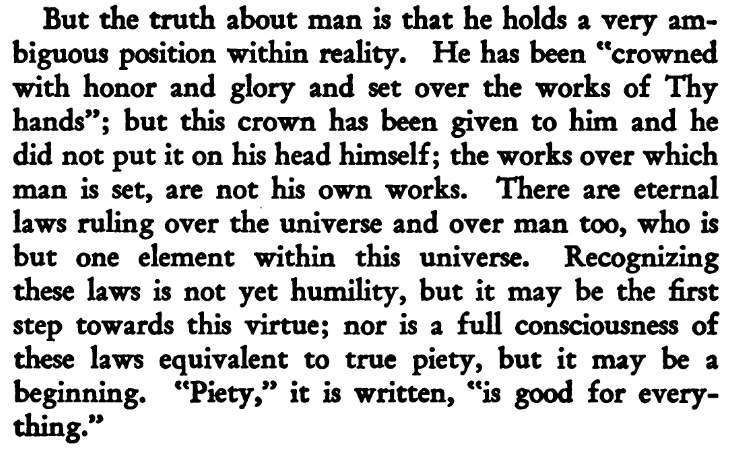Satura Lanx II
Reflections during the month of June.
This is a continuation from my reflections of the 1st Quarter of 2023, and also perhaps a review of some ideas in this article. Here is Part III.
1. Are our differences irrelevant?
“Atopos”, the title of 2022 song by Björk, means “unusual, out of place”. The album opener, it deals (along with the next song in the tracklist, “Ovule”) with the theme of coexistence (“to find that resonance / where we do connect”) between all sorts of differences, specifically between the masculine and feminine. Björk was inspired by Roland Barthes' meditation (A Lover’s Discourse) on the subject of “atopy” in a romantic relationship: the unclassifiable originality of the Other (“atopos”) that is resolved only in the union, in the relationship itself. Byung-Chul Han introduces this term (Agony of Eros) in the context of our current culture of consumerism that establishes and sells “difference” for consumption: where a-topos is without-place and thus can’t be consumed, differences are located and marketed (i.e. “trad” vs. “prog”). Emmanuel Falque notices (Wedding of the Lamb) that while God can’t be contained (or consumed), there is finally a mutual exchange in the Eucharist: when we consume (eat) the Eucharist (which is also called “communion”), we are also consumed (eaten), effectively identifying our relationship with God as the true “Atopos”. He also states that difference is primordial (love as differentiation); the dynamics of the male/female pair as a language is appropriated by God to teach us about the Creator/created (God/man) pair, where “differentiated communion” (one body, of many parts) is the original state as opposed to “rediscovered unity” (amorphous blob).
In the end, our differences are irrelevant (even though real and crucial) when it comes to love: while difference is essential to relationship, self-engulfing fixation on difference is a product of narcissism that blocks connection. The opposite of that is openness, where difference leads naturally to correspondence (“flesh of my flesh“).
2. Relationship: Companion, Friend, Servant, Mother, etc.
In Genesis, we learn God created Eve as a companion to Adam, to be his complement and helpmate. After the fall, Abraham is called a friend of God, because he believed. Various people in the OT are called a servant of God, because they submit to God’s will; this term is applied to Jacob (Israel) and thus to all his descendants, of which the Virgin Mary, the mother (mater, materia, the matter/material) of God, is the representative. Benedict XVI, of blessed memory, says:
“Because she is entirely response, correspondence [Entsprechung], she cannot be understood where grace seems to be opposition and response… This contradiction between God's "is" and man's "is not" is lacking in the case of Mary, and consequently God's judgment about her is pure "Yes", just as she herself stands before him as a pure "Yes". This correspondence of God's "Yes" with Mary's being as "Yes" is the freedom from original sin. Preservation from original sin, therefore, signifies no exceptional proficiency, no exceptional achievement; on the contrary, it signifies that Mary reserves no area of being, life, and will for herself as a private possession: instead, precisely in the total dispossession of self, in giving herself to God, she comes to the true possession of self.”
–Pope Benedict XVI
3. Man and Woman, Heaven and Earth
Falque establishes a relationship between the first day (“he created the heavens and the earth”) and the sixth day (“male and female he created them”) of creation, and between these and Good Friday, and uses this as the basis for the premise of “primordial difference”. This analogy of duality is found throughout the Bible, both through the OT and the NT. Jesus even explains it in Matthew 13. Rain showers the land, dew falls from heaven, manna is sent down from the sky, the Son of God is buried, the Body receives the Spirit—and the earth opens herself to these gifts from above and gives forth “fruit”.
“The one who sowed the good seed is the Son of Man.”
–Matthew 13:37
4. God and man, and mercy (and justice)
Mercy is the fullness of justice, according to St. Thomas Aquinas, and God establishes himself as “mercy” in Exodus 34:6,7—a passage which is known as the “13 Attributes of Mercy” (a number we Catholics associate with Our Lady due to the Fatima apparitions) and is recited by Jews in the Tachanun prayers.
The first reading for the Memorial of the Immaculate Heart of Mary this year (2 Corinthians 5:14-21) restates the aforementioned differences: God created and creates anew (redeems) out of mercy—while we are called to be the “justice” of God. Just as God is neither male nor female, mercy and justice are one in God. But in our relationship he invites us to play a role. In Judaism, mercy (abundance) is attributed to the father, and justice (restraint, which is interesting to consider in light of Mary’s perpetual virginity) to the mother, which is associated with both the “evil inclination” (Eve) and fear of the Lord. Following St. Thomas Aquinas, mercy represents the abundance of His goodness, and justice is perfection in proportion. The reading tells us that to be the justice of God is to be the -bearers of the message- of reconciliation just as we have been reconciled to him.
“Our justification comes from the grace of God [and] grace is a participation in the life of God.”
–Catechism, #1996
5. God and Israel (Mary), Husband and Wife; Ketubah, commandments, Incarnation
The covenant in Mount Sinai between God and Israel is also referred to as a marriage, the tablets with the 10 commandments as a ketubah (marriage contract). God descends and asks Israel (through Moses), and she says Yes. From the Catholic perspective, eventually Israel (Our Lady) gives birth to God’s firstborn, descending again in the Incarnation (and once again on Holy Saturday, and on Pentecost), and the family is ever expanding as to date. The scene at Mount Sinai repeats itself at the Annunciation, and again every Mass during communion.
“Make holy, therefore, these gifts, we pray, by sending down your Spirit upon them like the dewfall, so that they may become for us the Body and Blood of our Lord Jesus Christ.”
–Eucharistic Prayer


6. The Fatherhood of God, moral responsibility and the Creative Vow
St. John Paul II stated that, because motherhood is natural to the mother and she has a more immediate knowledge of her role, fathers learn fatherhood from them (another way cited is through sonship). This obviously does not apply to God, who is described as both father and mother in the Bible. But God takes on the role of the father. While mothers say yes to new life within them (interesting to apply this to the Christian life), fathers say yes to the new reality (responsibility) that is invited upon them, as Gabriel Marcel puts it (The Philosophy of Existentialism). He calls it the “creative vow”. The failures (lack of fidelity) of the fathers in the OT contrast starkly with the Fatherhood of God. Men have a choice to stay present (faithful) or to flee, without leaving a trace. God is always faithful. He provides unceasingly for his creation, and if he chose to leave his wife and children, it is we who would evaporate from existence.
“God "desires all men to be saved and to come to the knowledge of the truth, that is, God wills the salvation of everyone through the knowledge of the truth."”
–Catechism, #851
7. Noah’s rainbow and Pride
The rainbow is a sign of God’s covenant with all of his creation, and of his mercy. He says to Noah to “multiply”: to be fertile, to be open, to cooperate with God. God emphasizes that his covenant is with “every living creature on Earth”: the rainbow (7 colors) is a symbol of the differentiated communion described by Emmanuel Falque, in contrast with the pride flag (6 colors), a symbol of marketed difference selling a “rediscovered unity” that never has been, and is thus false.
“For all creation is waiting eagerly for that future day when God will reveal who his children really are.”
–Romans 8:19
8. The Mystical Body of Christ / “trads” and “progs” vs. the Atopos Catholic
Marketed difference is a tool of propagation for narcissistic tendencies, as opposed to real, or better said “primordial” difference. Cultures “cultivate” and nurture from their soil of origin these primordial differences, but in a world without culture, a barren world, an anti-life world, these necessities are supplied in the form of “lab meat”. Traditionalists and progressives have both become laboratory engineered experiments from this “culture”, their “primordial” ethos forgotten. In my own humble, personal and uneducated opinion (and as silly and cringe as it may sound), Pope Francis' style of leadership models the Atopos Catholic: in the style of that Björk tune, that of recognizing precisely that our differences are irrelevant, even though real and crucial, if love truly is differentiation and thus a correspondence between parts.
“Just as a body, though one, has many parts, but all its many parts form one body, so it is with Christ. For we were all baptized by one Spirit so as to form one body—whether Jews or Gentiles, slave or free—and we were all given the one Spirit to drink. Even so the body is not made up of one part but of many.”
–1 Corinthians 12:12-31
9. Hope as workout for the heart, the Triumph of the Immaculate Heart
In his meditations on Holy Saturday, Pope Benedict XVI situates the final solitude as that of “the fear of not being loved” which God overcame with his descent through Christ, and is still perpetuated through witness: the call to “righteousness” (justice) of those given new life in Christ, which first grew around Our Lady (the apostles). Pope Benedict XVI also makes an analogy between our times and the scene in the gospel where Jesus calms the storm: anxiety due to feeling abandoned. The lack of real connection between people: ideological division, war, loneliness, etc. are finally being identified as root problems in today’s age. It’s interesting if we consider that, in the gospel reading for the Memorial of the Immaculate Heart of Mary, after anxiously looking for their son, Our Lady and St. Joseph -witnessed- Christ teaching the rabbis in the temple: they witnessed Christ as a brother to his siblings, the son in his Father’s house. Jesus, as Son, reveals the heart of the Father, and sends us his Spirit so we can be immersed, plunged in the life of the Trinity: forgiveness is first an act of mercy through God, and it becomes an act of justice through the commandment to reconcile, to be brothers and sisters.
It is this witness, this scene that Our Lady kept in her heart on Holy Saturday: as the Daughter of Zion, she kept, pondered, bore in her Immaculate Heart this message of God’s mercy, and thus hoped beyond hope in God for the Resurrection of her Son—and ours in Christ! It’s not difficult to imagine that simultaneously, while her Son preached the Word of Life to the dead in Hell, Our Lady prayed, interceded for us on Holy Saturday, hoping for our conversion, our reconciliation.
On Good Friday, God gives Mary the role of mother once again, and long before that in The Visitation, St. Elizabeth foreshadows the importance of her (the Church, and each one of us) role as mother, helper: Jesus gifted us His Spirit not to be pretty vessels but to be sharers of peace (shalom, greetings in Jewish), bearers of the message of reconciliation. That hope which the Theotokos exercised in her motherly heart in the moment of darkness, and before the eventual triumph, is the fruitful cooperation and openness to the abundant and life-giving mercy of God.
“Make the mystery of Your Easter joy shine, like the aurora of the dawn, on these days of ours; grant that we may truly be men of Easter in the midst of history’s Holy Saturday.” –Pope Benedict XVI
10. Slavoj Zizek and the World of Aedena (and the attack on Woman)
Slavoj Zizek’s clarification on his comment about bees reminded me of a Jean-Giraud Moëbius series called “The World of Aedena” which alluded to contemporary maladies, decades in anticipation. There’s a scene where a reptile-like creature—which passes itself as a being called “The Goddess” and tyranically rules over a society that has hidden the truth of gender through hormone-suppressing drugs, and also has an irrational fear of germs (and nature)—makes it clear that its enemy is the female protagonist of the story. The modern “masculinity crisis” might well be an effect of the war on women; an attack on one is an attack on the other. Satan hates Mary, because he hates difference, even though he loves strife and separation: this is the real reason Dante depicts in him an image of self-engulfing narcissism in Inferno.
“Where our Mother is at home, the devil does not enter in. Where our Mother is present, turmoil does not prevail, fear does not conquer.”
–Pope Francis






